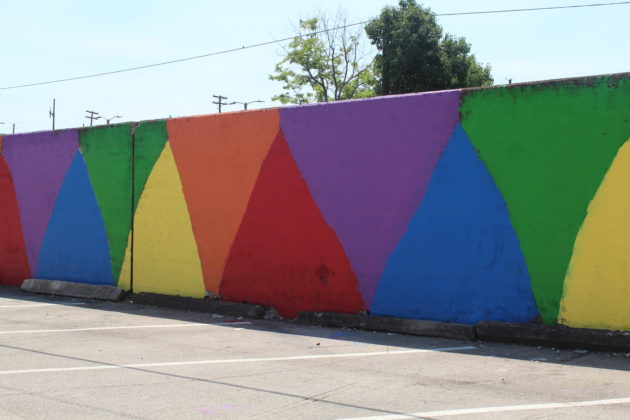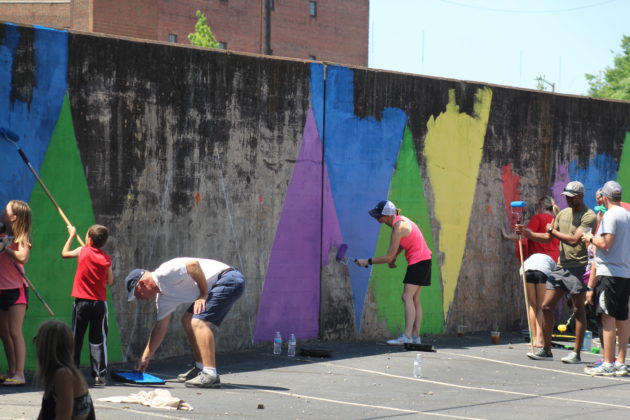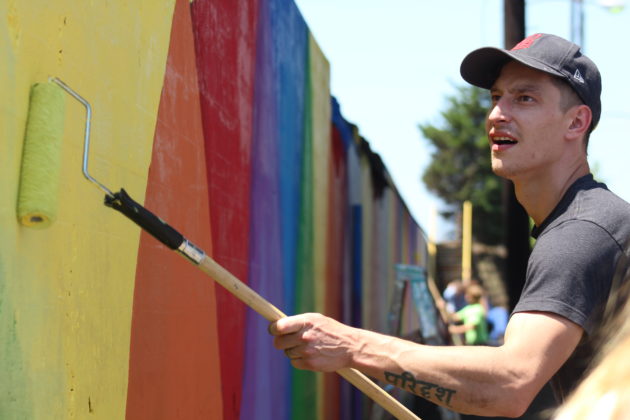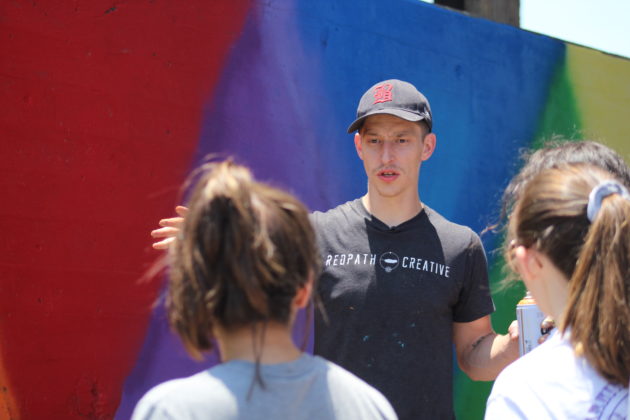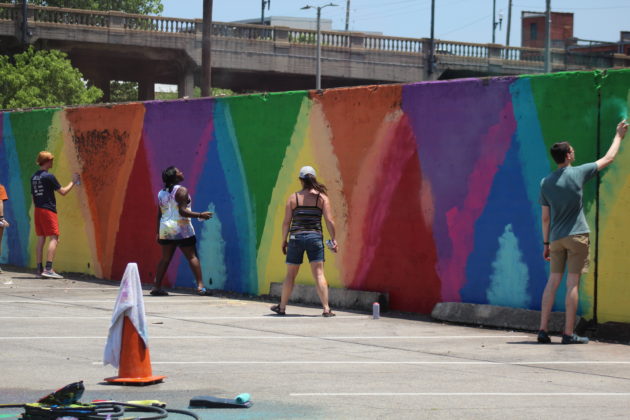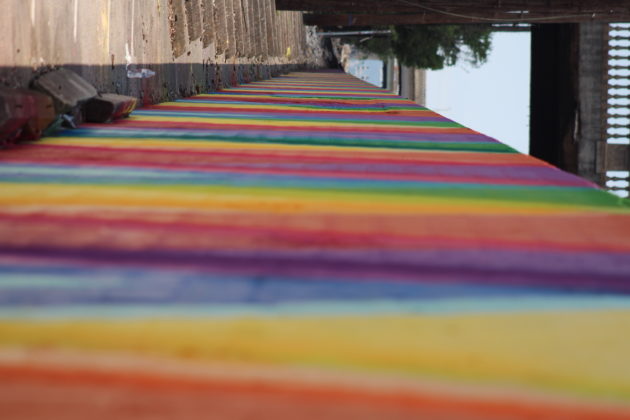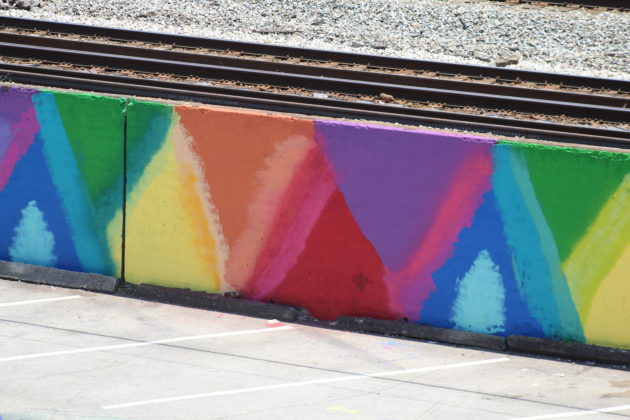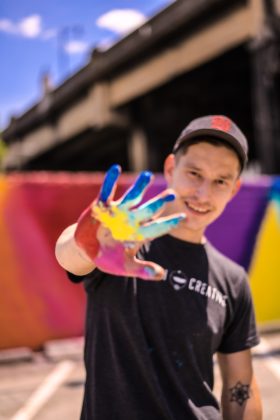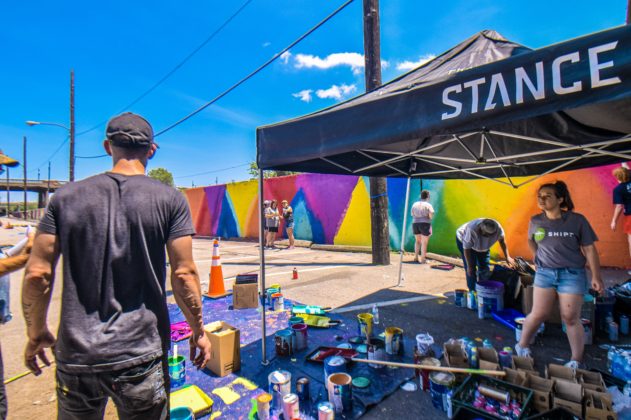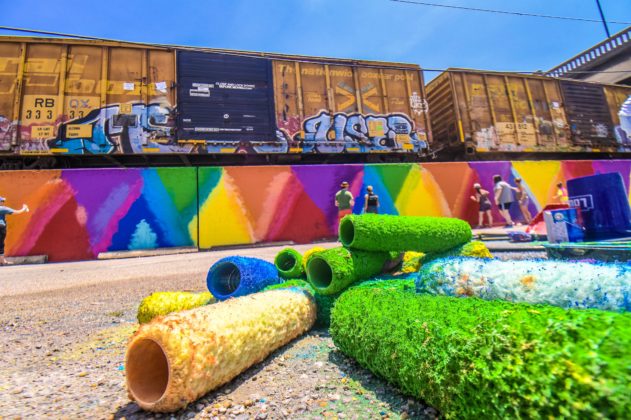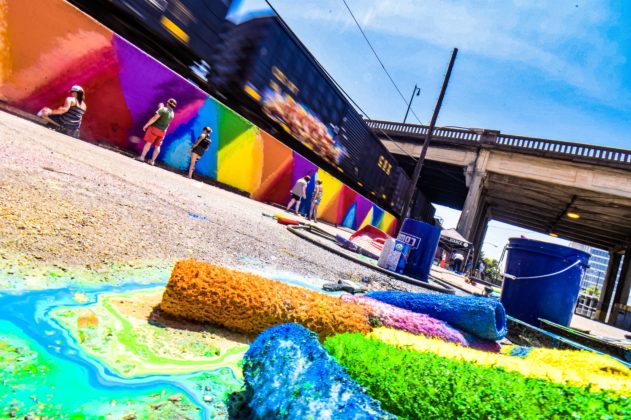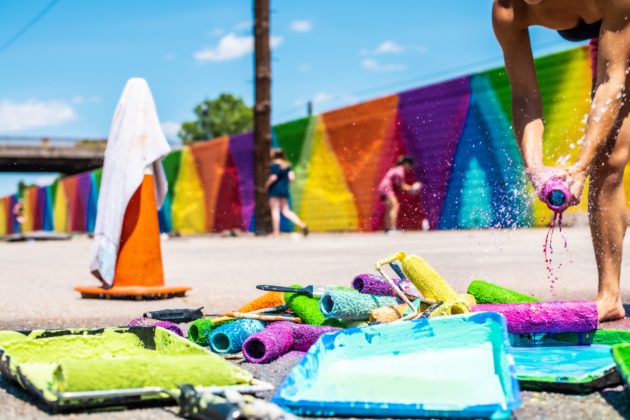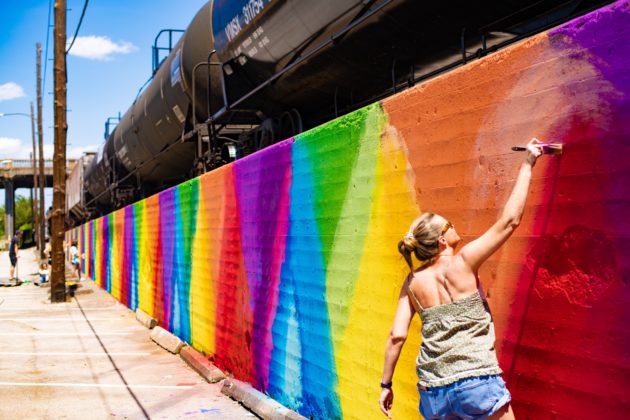
By Ameera Steward
The Birmingham Times
Walking along brick-paved Morris Avenue downtown Birmingham, it’s hard to miss the vibrant array of colors visible in the distance. Just past the blur of the “Robot” mural already in place, bright sunlight shines on what looks like the beginnings of a concrete rainbow being created by citizens of Birmingham.
On Saturday, June 2, children, teens, and adults joined to create the Magic City’s newest mural, a design they can take ownership of and tell their children, “‘Yeah, I came out. … I painted this,’” said muralist Marcus Fetch, 30, originator of Color Bham and owner of RedPath Creative, which creates “public mural events that people can feel like they’re a part of,” he said.
Fetch said his goal is for Birmingham to be known as “The City of Color.” To that end, he has started “placing a bunch of color landmark murals around town.”
He and the RedPath Creative team have designed some of the city’s most popular wall paintings, including the “Wings of Avondale” mural outside Melt Restaurant in Avondale; the “Mural of Hope,” in honor of the Hope for Autumn foundation that raises money for families battling childhood cancer; and “Eyes on Birmingham” on First Avenue North.
One of his most recent is the “World Games 2021” mural at The Waites apartment building on Richard Arrington Boulevard, between University Boulevard and Seventh Avenue South.
This past weekend, Birmingham residents were invited to help participate in the making of the new 500-foot long “Rainbow Wall” on the side of the railroad tracks off historic Morris Avenue between 22nd Street and 20th Street North in downtown.
“Instead of being known as this black-and-white racial city, [we can be known] as this colorful city,” Fetch said.
Proud Painters
Saturday’s event was the second time Fetch got the community involved in painting a wall. Last year, approximately 800 people participated in painting a mural at 1316 First Avenue North downtown Birmingham; it didn’t have a theme, Fetch said, “It was chaos, but it was fun.”
This year’s project was different. When completely finished, the mural will be a continuation of the rainbow tunnels located around 14th Street, he said: “I want it to be where you don’t know when one color starts and the other stops.”
It takes Fetch about two to three days to complete most murals, and a project like the “Rainbow Wall” would have taken a week if he’d done it by himself.
“Because we have [approximately] 100 people, we do it fast, we do it in a day,” Fetch said.
Birmingham-area resident Beth Rhodes said she was proud to be a part of the painting.
“It was incredible seeing a project like this bring the community together and so many people working hard,” she said. “I feel like I’m part of creating a landmark in town that I will be proud of for years.”
“Activate Spaces”
Projects like the “Rainbow Wall” are incredibly important for a city, said Fetch.
“They’re a major part of what gives an impression to a city, to travelers,” the muralist said. “They help define the personality of the city. They activate spaces and draw people to them, so they’re very powerful for business and economics, too.”
Strategically placed public art, for cities that have more tax money to invest into it, becomes a huge priority, “especially around business districts,” Fetch added.
“We live in a very photogenic society nowadays. … That’s the main [reason] I want to paint this. This is going to be the primary photo spot. It’ll be #BirminghamRainbowWall. Over the years, we’ll see thousands and thousands of tags, and it’ll become like a landmark—and, man, that’s cool. It’s cool for everybody here, too, because two years from now they’ll see a tag and be like, ‘I was there.’”
The best part of the recent mural-painting project is that volunteers made friends, memories, and history by coloring Birmingham together.
“Events where you’re building stuff together, I think, always encourage community,” Fetch said. “But then, as far as … community, murals specifically, there’s a way you can do it so the community can have a voice.”
Most of the funds for the “Rainbow Wall” came from companies like Shipt, Carrigan’s, and Kinetic Communications, who helped get most sponsors, Fetch said.


